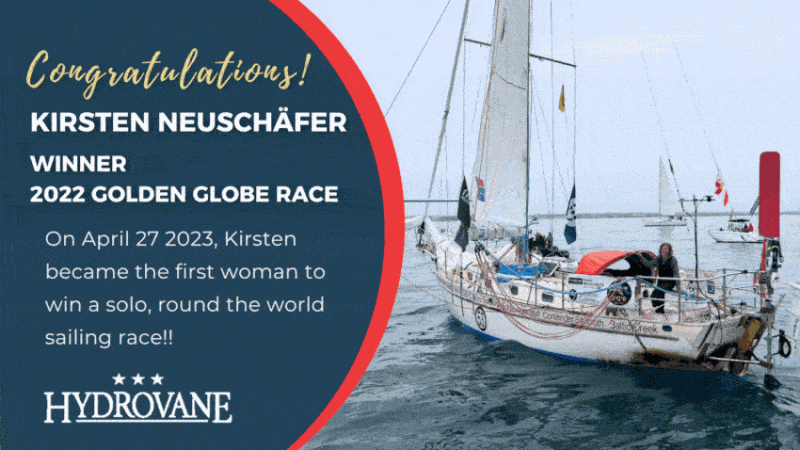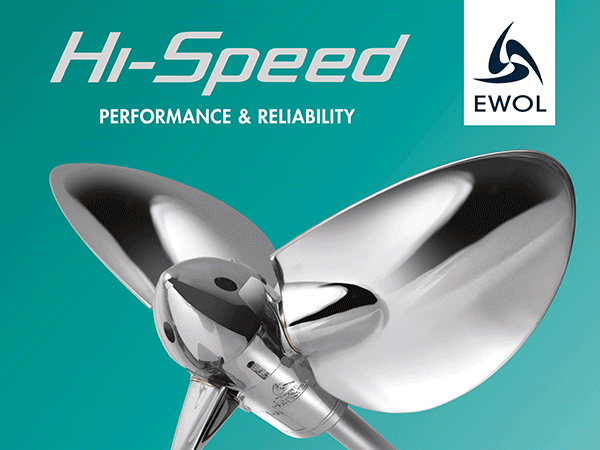
Eight Bells: Buddy Melges Passes Away at Age 93
Legendary sailor and boat builder Harry Clemons “Buddy” Melges Jr. passed away on May 18, 2023. Tributes and reflections are being shared across the internet as sailors remember racing against and sharing sailing stories with the man who was “considered to be one of the greatest competitive sailors in the sport of sailing.”
Although Buddy was predominantly a Midwest sailor, many on the West Coast, particularly here in the Bay, have enjoyed (and still enjoy) his legacy through the Melges 24 and Melges 20, among the Bay’s favorite racing boats.
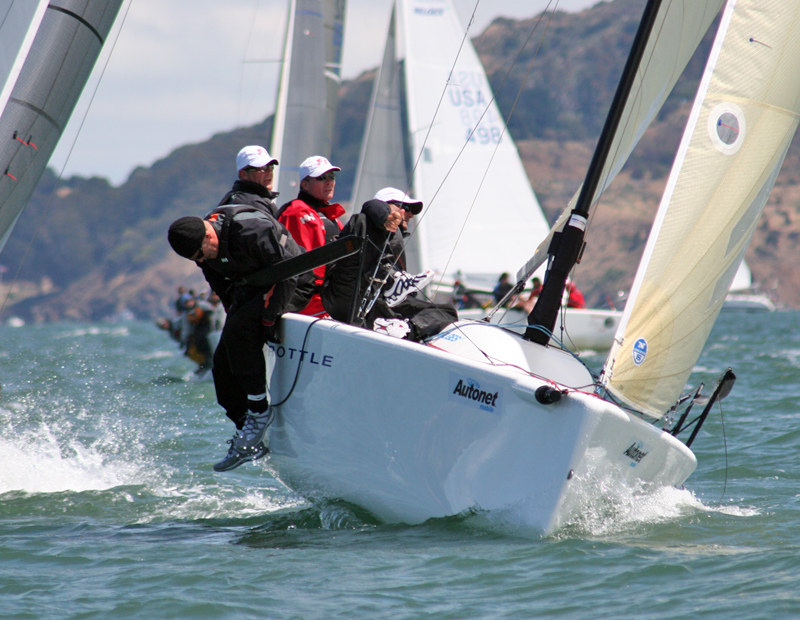
Comments shared on social media include:
“If this doesn’t bring you to tears, we’re not sure what will. What a legend. What a legacy we carry … with every race, with the Melges 24! In never-ending gratitude … Thank you Buddy!” — Melges 24/Facebook.
“Eight Bells: Buddy Melges. A legend has been lost. Harry Clemons “Buddy” Melges Jr., considered to be one of the greatest competitive sailors in the sport of sailing, passed away on May 18, 2023. He leaves behind a remarkable legacy as one of the most accomplished and revered sailors in American history.” — National Sailing Hall of Fame/Facebook.
“Sad to hear that Buddy Melges has left us. He was an incredible sailor, liked and admired by everyone.”— Russell Coutts, SAilGP.
Our own Latitude 38 crewmember Jean Ouellette had this to say about Buddy: “He was regarded as a genial and gracious person ashore, when he wasn’t savaging the competition on the racecourse. RIP.”

The Melges family has published an obituary for Harry Clemons “Buddy” Melges Jr. Read here.
Good Jibes #92: Life at Sea, Master Mariners Racing, and Going With the Flow
This week’s host, Monica Grant, reads three articles from the May 2023 issue of Latitude 38 Sailing Magazine. Hear “Making Sense of a Life at Sea” by Emma Casey, “Master Mariners Racing — An Ageless Tradition” by Martha Blanchfield, and “Going With the Flow” by Ashley Gremel.
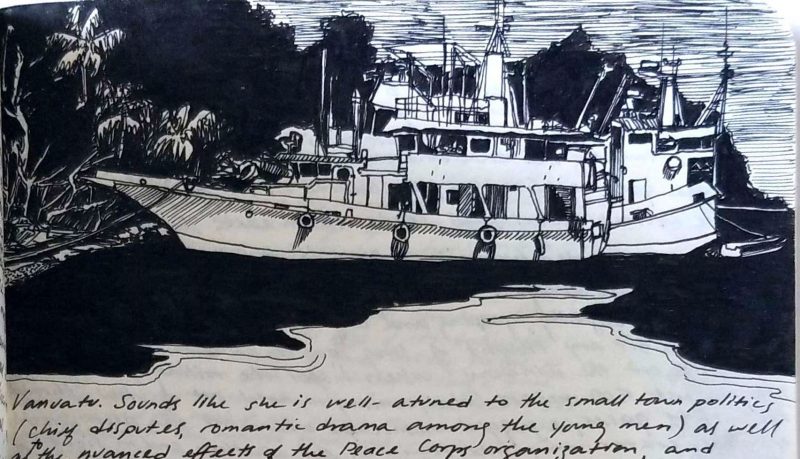
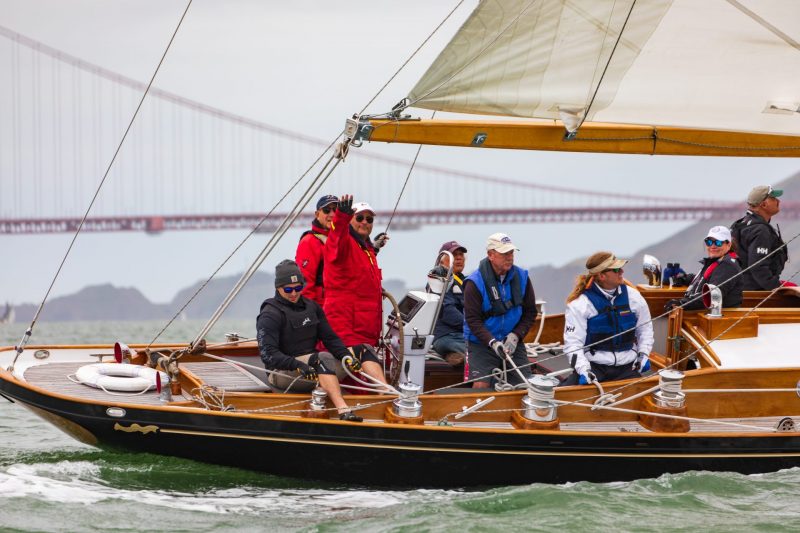
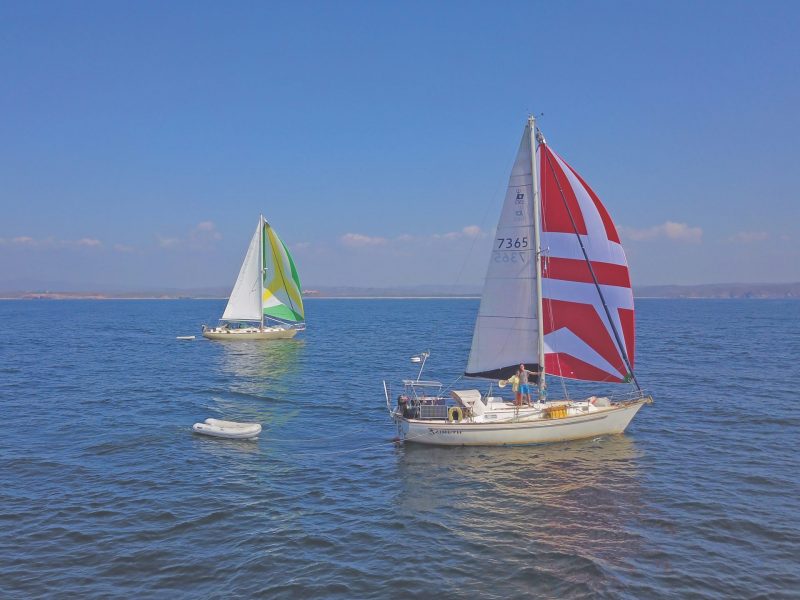
This episode covers everything from rough waters to beautiful sunsets. Here’s a small sample of what you will hear:
- What is Landfall Leatherworks?
- How’s the trip from the Maldives to the Seychelles?
- What is the Master Mariners Race?
- Where are the Sandwich Islands?
- What does the Master Mariners Benevolent Association do?
- Who was Matthew Turner?
- Where can you see pilot whales?
- Who is Chris Parker?
Follow along and read the articles at “Making Sense of a Life at Sea,” “Master Mariners Racing — An Ageless Tradition,” and “Going With the Flow.”
Listen to the episode on Apple Podcasts, Spotify, Google Podcasts, and your other favorite podcast spots — follow and leave a 5-star review if you’re feeling the Good Jibes!
Steering the Dream With Hydrovane
Hydrovane is your best crew member: an independent self-steering windvane and emergency rudder/steering system … ready to go!
MOD 70s on the Bay Ahead of CA 500 and California Offshore Race Week
Three MOD 70 hot rods are in town getting ready for the CA 500 race from San Francisco to San Diego. Kim Paternoster and David Parker had breakfast with Charlie Ogletree, skipper of Jason Carroll’s MOD 70 Argo. They report that the three boats will be out on the Bay practicing today and tomorrow, before the three start the CA 500 at 11:00 a.m. on Friday for the 500-mile sprint to San Diego.
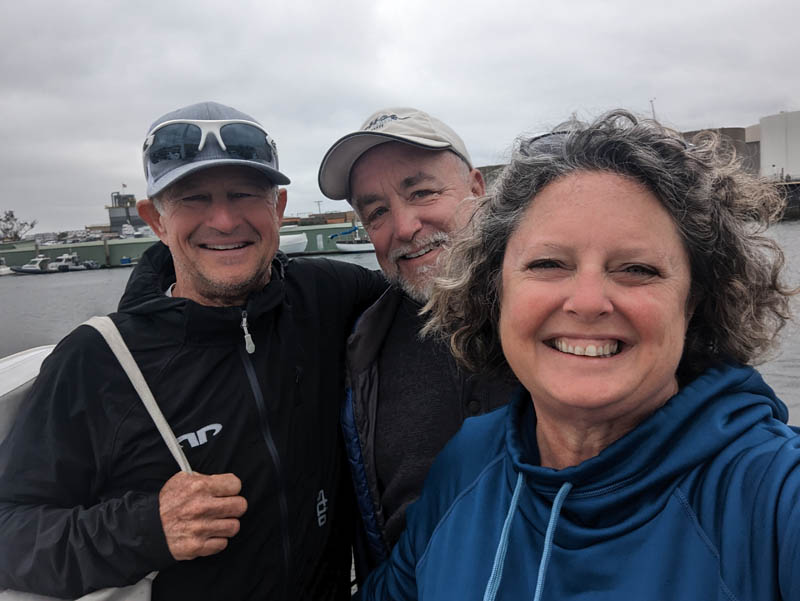
This is all part of California Offshore Race Week. This is both an excellent downwind California coastal offshore race and an ideal feeder for boats planning to start the Transpac on June 27.
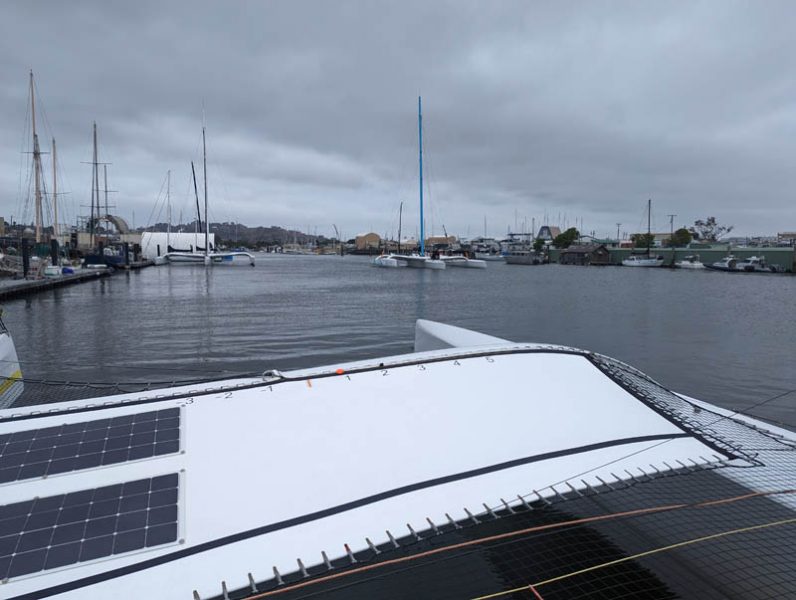
Lining up on the Bay this week for Friday’s CA 500 are Jason Carroll’s Argo, Justin Shaffer’s Orion, and Frank Slootman’s Snowflake.
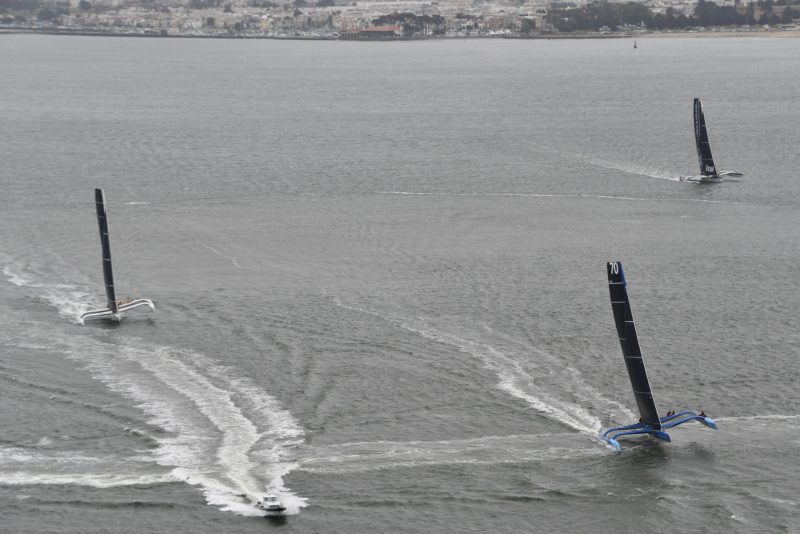
In the blink of an eye (they hope) they’ll be in Southern California to do an “in port” race on San Diego Bay on Sunday. The MOD 70s Orion and Argo will carry on to do the Transpac, starting in June.
There’s a Difference Between Polishing Winches and Greasing Bearings
What a great crew! After a terrible start to our Friday night beer can race, we were forced to tack for clear air in vain. While the crew decided there wasn’t much they could do to help improve the skipper’s starting tactics they thought they could at least make it easier to tack. They offered to help clean and grease the winches. How could we say no? Both Randy Gridley and Tom Woolly have dismantled, cleaned and greased many winches in the past, but unless you do it regularly, pulling the drums off a new set is always a fresh learning experience.
Polishing the outside of the winch is easy, but cleaning the inside is a different animal. Randy helped prepare the list of materials needed, which included winch grease for the heavy bearings, light oil for the pawls and springs, new springs, acetone for cleaning, rags, brush to apply the light coating of grease, paper towels, rags and sunscreen. When disassembling, we took photos and placed each piece down in order of removal. This is where digital photography comes in super-handy.
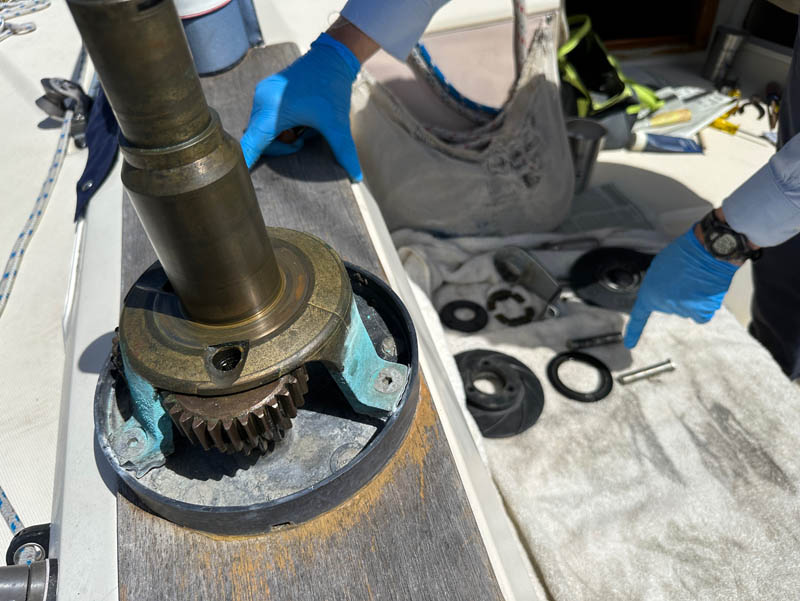
It helps to have a nice day and not be in too much of a rush, since patiently taking photos and laying components out for reassembly is critical to remembering how to put them all back together. Varnish looks like another task for the future.
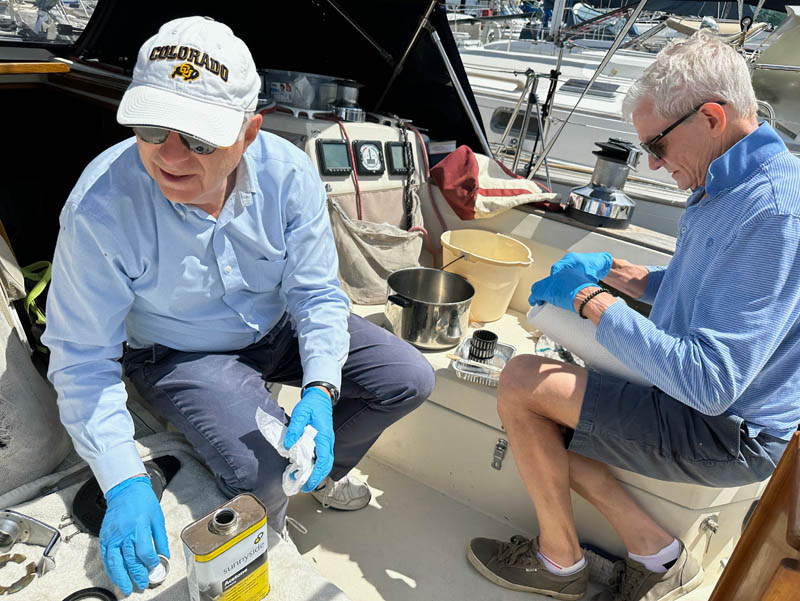
Another hot tip was to do one winch at a time. If you take two completely apart you don’t have one to look at when you’re flummoxed on how to reassemble them. Having an assembled winch to look at when you’re reassembling the first one is a big help.
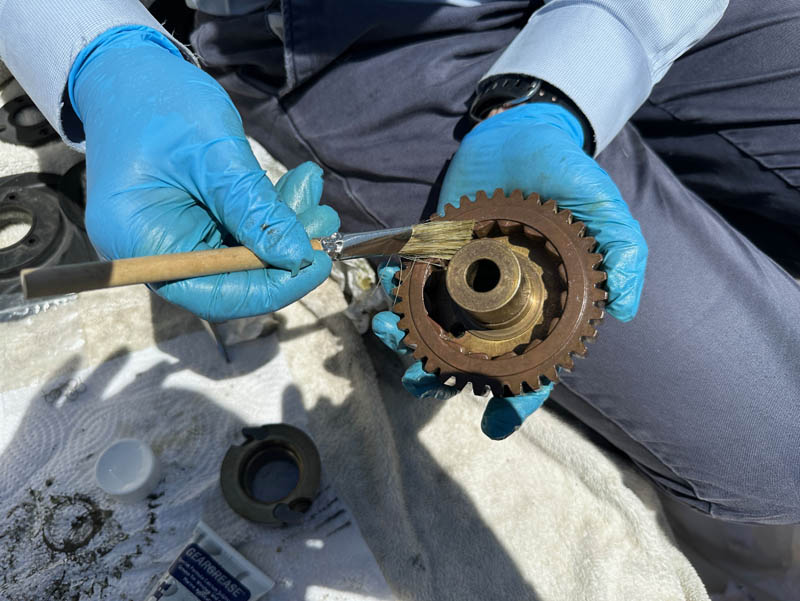
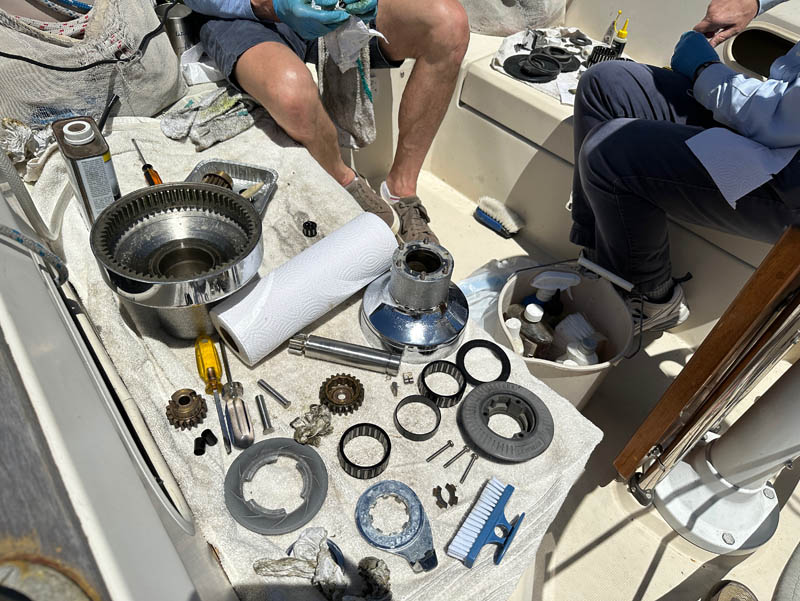
We disassembled the port-side primary and secondary winches first. It was again important to keep the parts for each clearly separated. Mixing them up can add many frustrating hours to putting the jigsaw puzzle back together again, though having the starboard-side winches assembled as a handy reference was reassuring.

Some of the teeth and other elements were pretty gummy with grease that had to be scraped out with a screwdriver before the acetone could do its work. Eventually the scraping and acetone had them glistening before we reapplied fresh, clean grease.
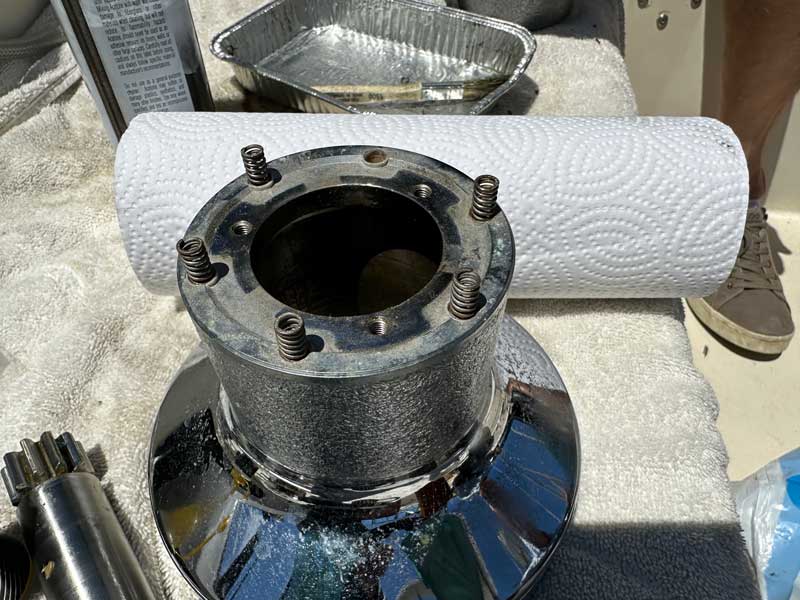
We did get them all put back together with very few extra parts left over. Oddly, the two-speed winches are single-speed, and port and starboard don’t match. Actually, it all came out perfectly. It was awesome to have knowledgeable, helpful crew to take on this task, and reassuring to see the winches in good shape and cleaned up for another 10 years! Just kidding. We’ll do them again in a couple of years. How often do you clean yours?
We know none of this will help the skipper’s starting abilities, but it should ease the crew’s pain when we’re again tacking for clear air.
Orca Behavior Investigated as Three Boats Are Sunk in Europe
In October 2020 we shared the story of orcas seemingly attacking sailboats and damaging their rudders. The circulating stories suggested that orcas had been ramming boats off the coast of Spain and Portugal for several months. The attacks were thought to be a form of retaliation or stress. Now, in the wake of three boats having been sunk due to orcas, scientists believe the behavior is being copied and learned among the orca population. Their theories are published in a recent article on the website Live Science.
According to the article, three orcas struck a sailboat on the night of May 4 in the Strait of Gibraltar, off the Spanish coast. Live Science shared an excerpt from a sailing magazine that had spoken with the boat’s captain. “‘There were two smaller and one larger orca,’ skipper Werner Schaufelberger told the German publication Yacht. ‘The little ones shook the rudder at the back while the big one repeatedly backed up and rammed the ship with full force from the side.'” This is reportedly the third boat to be sunk as a result of orcas.
The story continues with the account of another sailboat that two days earlier had been navigating the strait when six orcas approached the vessel. “Greg Blackburn, who was aboard the vessel, looked on as a mother orca appeared to teach her calf how to charge into the rudder. ‘It was definitely some form of education, teaching going on,’ Blackburn told 9news.”
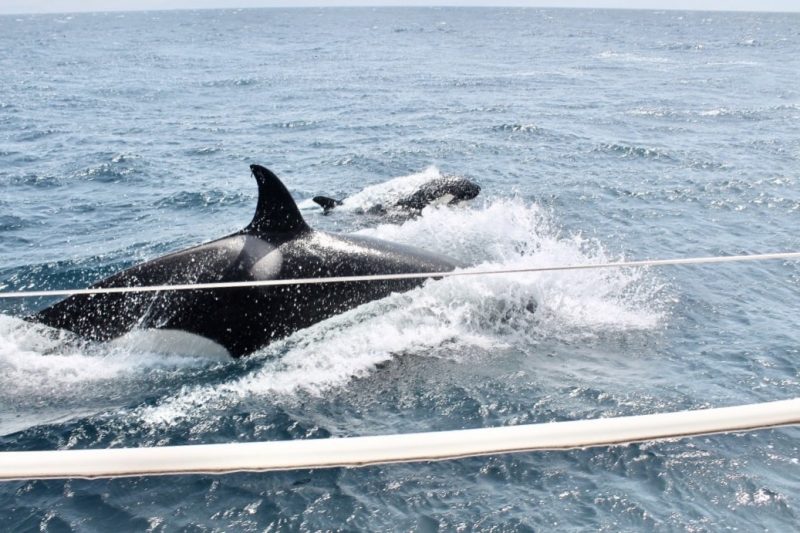
Orca attacks have been reported since May 2020 and are apparently becoming more frequent. The alarming thing for us is that they appear to be targeting sailboats in particular. “Assaults seem to be mainly directed at sailing boats and follow a clear pattern, with orcas approaching from the stern to strike the rudder, then losing interest once they have successfully stopped the boat,” Live Science writes.
Alfredo López Fernandeza, a biologist at the University of Aveiro in Portugal and representative of the Grupo de Trabajo Orca Atlántica (Atlantic Orca Working Group) said it is possible that the behavior stems from a female orca that has been named White Gladis suffering a “critical moment of agony,” (perhaps collision with a boat or entanglement in illegal fishing nets), which caused a “behavioral switch.”
The article goes on to explain that scientists don’t believe the behavior is being taught, but imitated. According to one study in 2022, “Orcas are social creatures that can easily learn and reproduce behaviors performed by others.” And in that way, López Fernandez explains, the behavior is spreading among the orcas “because they consider it something important in their lives.”
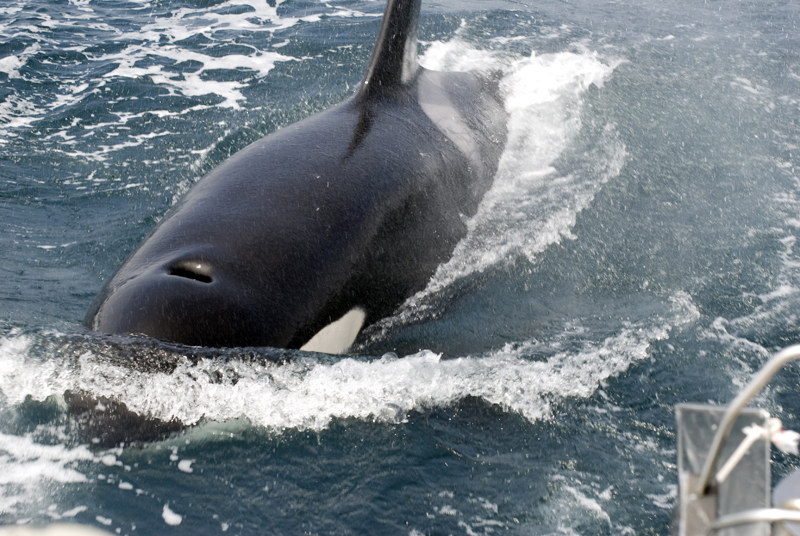
While the boat sinkings are alarming, the reality is that out of the “500 recorded interaction events since 2020″ only three vessels have sunk. Of course, that information doesn’t help those whose boats now sit on the ocean floor. One glimmer of hope in what appears to be an increasing problem is that the behavior may also be a playful fad” — a behavior initiated by one or two individuals and temporarily picked up by others before it’s abandoned,” researchers have said. Whatever it is, we hope the orcas get tired of it and leave the boats to share their waters without harm.
You can read more about the orcas and how their behavior is affecting cruisers in a report published online by the Cruising Association at www.theca.org.uk/orcas.

